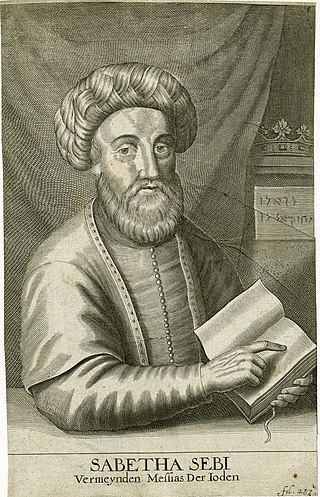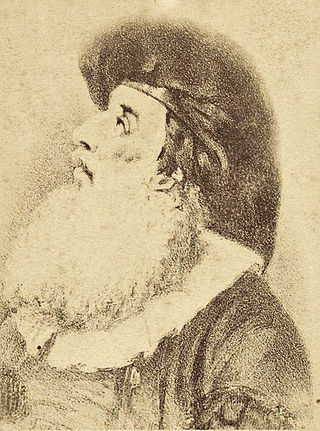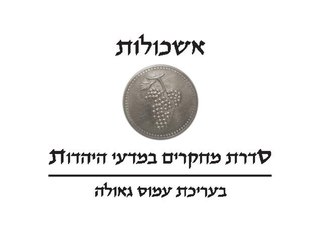
The Sabbateans were a variety of Jewish followers, disciples, and believers in Sabbatai Zevi (1626–1676), an Ottoman Jewish rabbi and Kabbalist who was proclaimed to be the Jewish Messiah in 1666 by Nathan of Gaza.
Chief Rabbi is a title given in several countries to the recognized religious leader of that country's Jewish community, or to a rabbinic leader appointed by the local secular authorities. Since 1911, through a capitulation by Ben-Zion Meir Hai Uziel, Israel has had two chief rabbis, one Ashkenazi and one Sephardi.
Aharon ben Joseph haLevi, known by his Hebrew acronym Ra'AH, was a medieval rabbi, Talmudic scholar and Halakhist.

Chernobyl is a Hasidic dynasty which was founded by Grand Rabbi Menachem Nachum Twersky, known by his work as the Meor Einayim. The dynasty is named after the northern Ukrainian city of Chernobyl, where Rabbi Nachum was the maggid. The lineage continues to exist, although not always with the name Chernobyl. Several rebbes are named Chernobyl. The central court is in Bnei Brak, headed by Rabbi Menachem Nachum Twersky.

The community of Sephardic Jews in the Netherlands, particularly in Amsterdam, was of major importance in the seventeenth century. The Portuguese Jews in the Netherlands did not refer to themselves as "Sephardim", but rather as "Hebrews of the Portuguese Nation." The Portuguese-speaking community grew from conversos, Jews forced to convert to Catholicism in Spain and Portugal, who rejudaized under rabbinical authority, to create an openly self-identified Portuguese Jewish community. As a result of the expulsions from Spain in 1492 and Portugal in 1496, as well as the religious persecution by the Inquisition that followed, many Spanish and Portuguese Jews left the Iberian Peninsula at the end of the 15th century and throughout the 16th century, in search of religious freedom. Some migrated to the newly independent Dutch provinces which allowed Jews to become residents. Many Jews who left for the Dutch provinces were crypto-Jews. Others had been sincere New Christians, who, despite their conversion, were targeted by Old Christians as suspect. Some of these sought to return to the religion of their ancestors. Ashkenazi Jews began migrating to the Netherlands in the mid-seventeenth century, but Portuguese Jews viewed them with ambivalence.
Rabbi Samuel ben Moses de Medina, was a Talmudist and author from Thessaloniki. He was principal of the Talmudic college of that city, which produced a great number of prominent scholars during the 16th and 17th centuries. His teachers were the noted Talmudists Joseph Taitazak and Levi Ibn Chaviv, and among his schoolmates were Isaac Adarbi, Joseph ibn Leb, and Moses Almosnino. While on a mission to Constantinople he met the noted grammarian Menahem Lonzano, who studied under him for some time and who therefore speaks of him as his teacher.
Moses Hagiz was a Talmudic scholar, rabbi and writer born in Jerusalem during the time of the Old Yishuv. He was also one of the most prominent and influential Jewish leaders in 17th-century Amsterdam. During Hagiz's lifetime, there was an overall decline in rabbinic authority which was the result of migration and assimilation, and Hagiz devoted his career to restoring rabbinic authority. His most prominent talent was as a polemicist, and he campaigned ceaselessly against Jewish heresy in an attempt to unify the rabbinate.
Nehemiah Hiyya ben Moses Hayyun was a Bosnian Kabalist, described by scholars as linked to Sabbateanism. His parents, of Sephardic descent, lived in Sarajevo, Bosnia, where he was most likely born, though later in life he pretended that he was a Palestinian emissary born in Safed. He received his Talmudic education in Hebron.

Naphtali Cohen (1649–1718), also known as Naphtali HaKohen Katz, was a Russo-German rabbi and kabalist born in Ostrowo in Ukraine. He belonged to a family of rabbis in Ostrowo, where his father, Isaac Cohen, a great-great-grandson of the Judah Loew ben Bezalel, had fled during the Polish–Cossack–Tatar War.
Jacob Hagiz (1620–1674) was a Jewish Talmudist born of a Sephardic Jewish family at Fez, Morocco. Ḥagiz's teacher was David Karigal who afterward became his father-in-law. In about 1646, Ḥagiz went to Italy for the purpose of publishing his books, and remained there until after 1656, supporting himself by teaching. Samuel di Pam, rabbi at Livorno, calls himself a pupil of Ḥagiz. About 1657, Ḥagiz left Livorno for Jerusalem, where the Vega brothers of Livorno had founded a beit midrash for him, and where he became a member of the rabbinical college. There a large number of eager young students gathered about him, among whom were Moses ibn Ḥabib, who became his son-in-law, and Joseph Almosnino, later rabbi of Belgrade. Another son-in-law of his was Moses Ḥayyun, father of Nehemiah Hayyun.

Solomon Ayllon was Haham of the Sephardic congregations in London and Amsterdam, and a follower of Shabbethai Ẓebi. His name is derived from the town of Ayllon, in what is now the province of Segovia.
Aaron ben Benjamin Wolf was a Rabbi at Berlin and then at Frankfort-on-the-Oder, where he lived until his death.
Aaron ben David Cohen of Ragusa was a Rabbi in the Republic of Ragusa.
Aaron HaLevi ben Moses (Hurwitz) of Staroselye was a Talmudic scholar and Kabbalist of note who lived in Poland during the latter part of the eighteenth century and the early part of the nineteenth.
Aaron Jekel ben Samuel Schor of Frankfurt also known as the Beis Aharon of Frankfurt was a 17th-century Jewish-German rabbi and Hebrew author, best known for his work "Beis Aharon", which is considered to be amongst the most important concordances of the Bible.
Rabbi Elazar Rokeach, also known as Eleazar ben Samuel, was the author of Maaseh Rokeach, and Chief Rabbi of Amsterdam.

"Eshkolot" is a Jewish Studies book series, edited by Amos Geula, a project of the Herzog College research institute that is published by the research authority of Herzog College in collaboration with the World Union of Jewish Studies. The Judaic Studies series includes works from the various fields of Judaism, which have a significant contribution and are a complete study of a particular subject or a critical edition of a manuscript with a comprehensive introduction. Each book is accompanied by a professional academic committee and undergoes academic editing as well as peer review. Some of the books in the series have unique databases open to the public which can be found on the Herzog College's Research Authority website under "Herzog Databases".
Raphael Jedidiah Solomon ben Jeshua Ẓeror was an Algerian rabbi.
Rabbi Joseph ben Emanuel Ergas also known as Joseph Ergas was an Italian rabbi and kabbalist, one of the leading critics of Nehemiah Hayyun and Sabbateanism in general.





